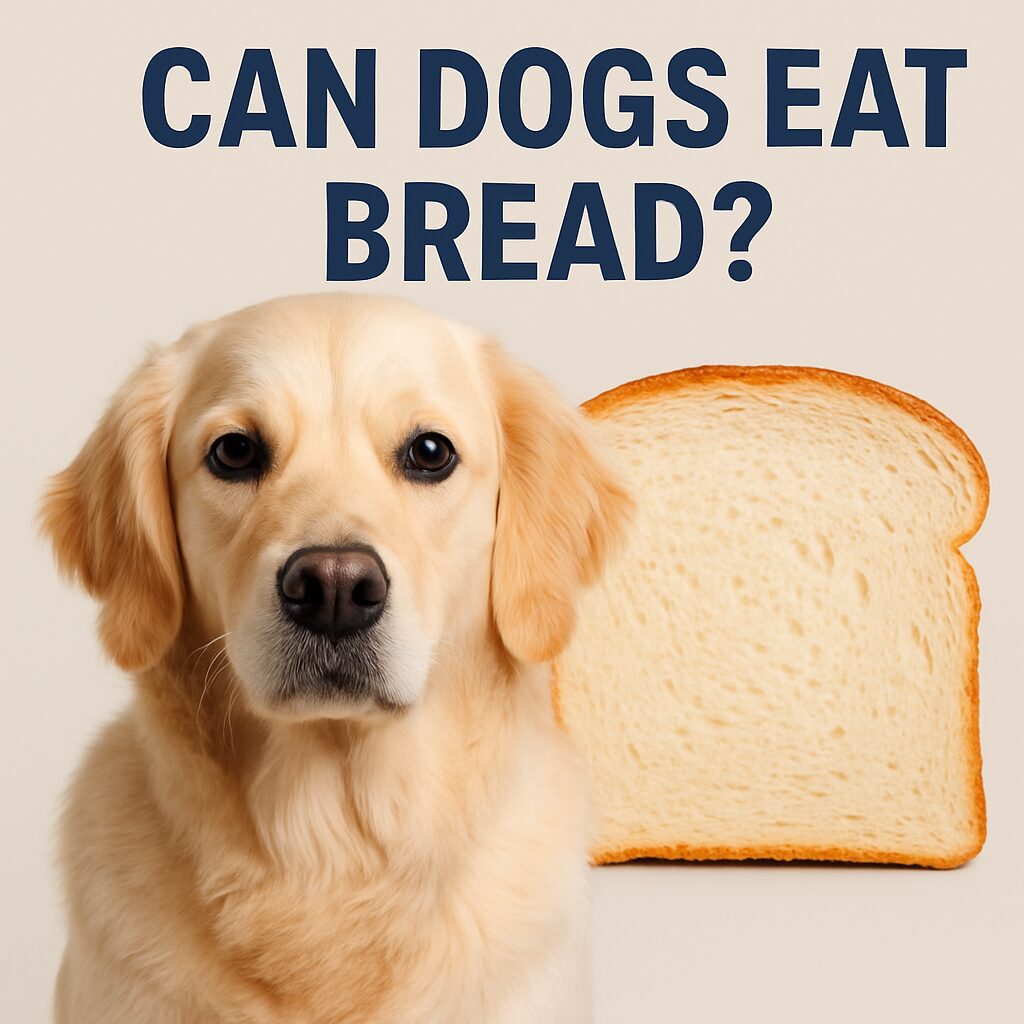As dog parents, we’ve all experienced those puppy-dog eyes staring at us while we eat. And if you’ve ever found yourself holding a sandwich or toast and wondering, can dogs eat bread?, you’re not alone. It’s a common question, and the answer might surprise you.
As a dog parents, we all have experienced those pet eyes staring at us while we eat. And if you have ever found yourself holding a snack, sandwich or toast and wondering, can dogs eat bread?, you are not alone. It’s a common question that comes in every pet owner mind, and the answer might surprise you.
Table of Contents
ToggleSo, what is the answer of this question Can Dogs Eat Bread?
Yes, dogs can eat bread but the amount should be very small. Their are many types of bread available in the market but Plain white or whole wheat bread is generally safe for dogs to consume as an occasional treat.
but that does not mean bread should be a regular part of your dog’s diet. It contain very little to no nutritional value and can lead to unnecessary weight gain if given daily.
Bread is essentially empty calories for dogs. Unlike proteins or healthy fats, it doesn’t support their growth, energy, or health in a meaningful way. That said, can dogs eat bread safely now and then? Sure. But it should always be plain and given in moderation.
Types of Bread Dogs Can and Can’t Eat
While dogs can eat bread, not all types of bread are created equal — and some should be completely avoided.
Safe Types of Bread:
- Plain white bread
- Whole wheat bread
- Homemade bread without spices or additives
Unsafe or Dangerous Bread Types:
- Garlic or onion bread (toxic to dogs)
- Raisin bread (raisins can cause kidney failure)
- Sweet bread with xylitol or bread with chocolate are like highly harmful and toxic for your pet
- Bread with nuts like macadamia are very
Before giving bread to your dog always read the ingredient list. Some seemingly harmless breads may contain substances dangerous to dogs.
Why Giving Too Much Bread to your dog is not a Good Id
Although dogs can eat bread but it doesn’t mean they should eat it often.
Here’s why:
Gain Weight: Bread is high in carbohydrates and calories. Frequent give your dog bread can contribute to obesity, especially in less active dog breads.
Upset Digestion: Giving too Too much bread to your dog might cause bloating, constipation, or gas to your dog.
Food Allergies: Some dogs may have wheat or gluten sensitivities that will lead to skin allergy, issues or stomach upset.
So, while answering the question “can dogs have bread?”, remember: you can feed your dog small pieces once in a while, this is ok but it is not recommended to give them bread on regular basis or count it as a healthy treat.
How to Feed Bread to Your Dog Safely
If you are going to give a bread piece of toast to your dog, you need to keep these safety tips in mind:
Feed them small amounts only, a few bites, not a whole slice.
Make sure it’s plain — no butter, jam, or spreads.
Avoid crusty breads — hard edges can be difficult for some dogs to chew.
At Brooklyn Pet Spa, we often remind pet owners that treats should never exceed 10% of their dog’s daily calories. Bread, if given, should be factored into that limit.
FAQs About Bread and Dogs
Q1: Can dogs eat bread daily?
A: No, even dogs can eat bread but daily feeding bread to your dog is not recommended. Daily feeding can cause to many disease and over weight.
Q2: Can dogs eat bread with butter?
A: Yes but make sure normal or peanut butter does not contain xylitol, which is very harmful toxic to dogs.
Q3: Can dogs have bread with toppings?
A: The answer is no when asking can dogs have bread with toppings, keep in mind that butter, jelly, or garlic spreads can be harmful or too rich for dogs.
Q4: Can dogs eat bread crusts?
A: Yes, dogs can eat bread crusts in very limited amount, but they should be soft not hard.








